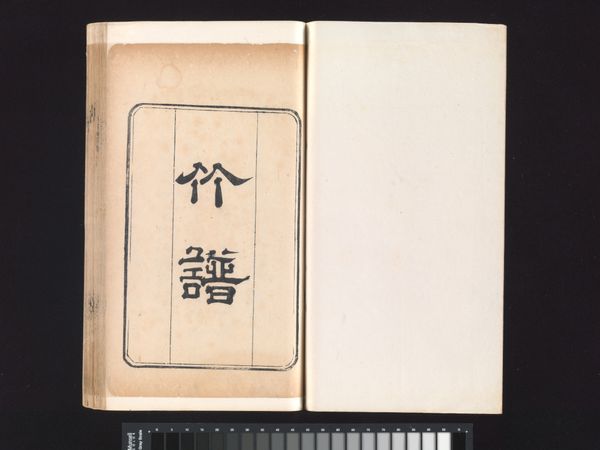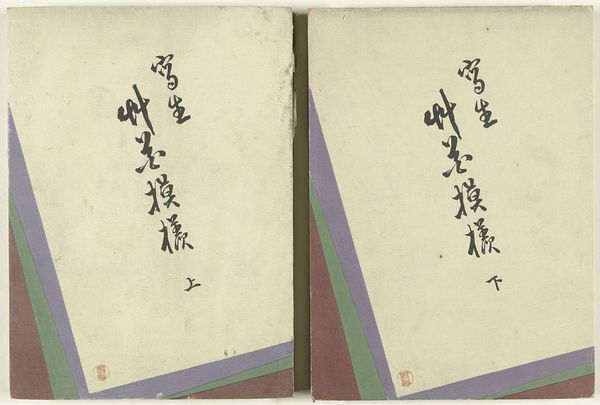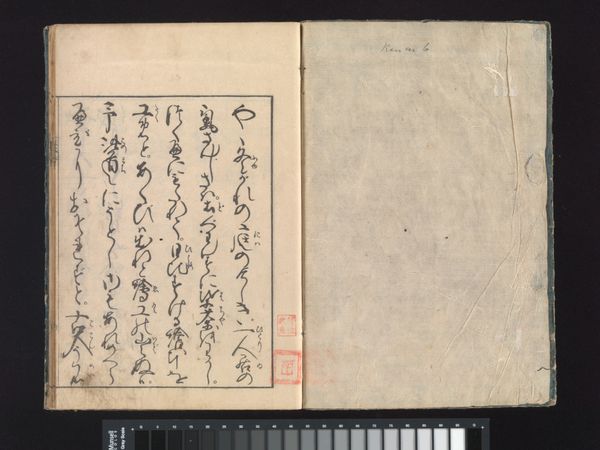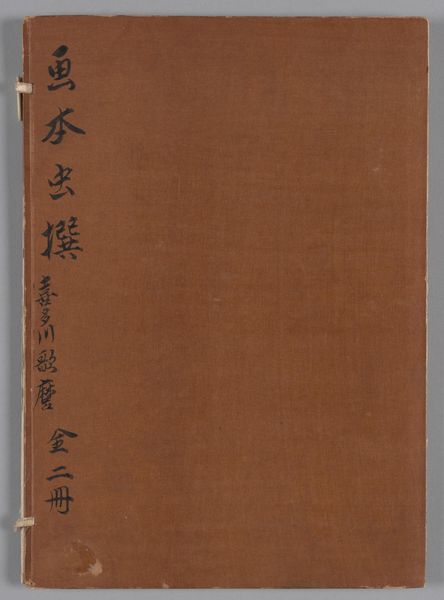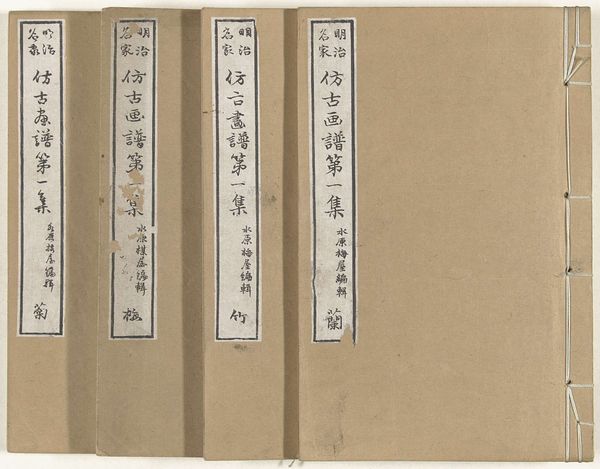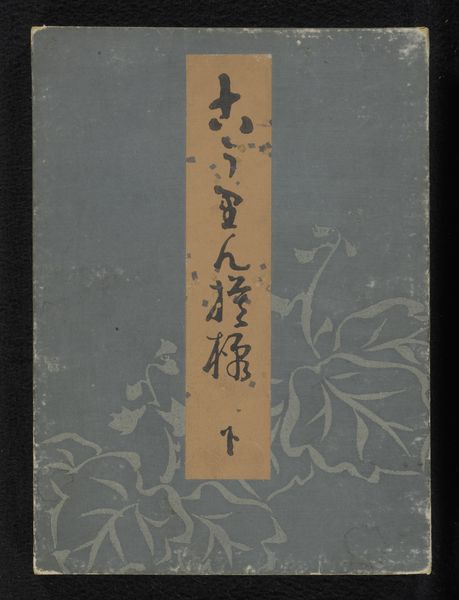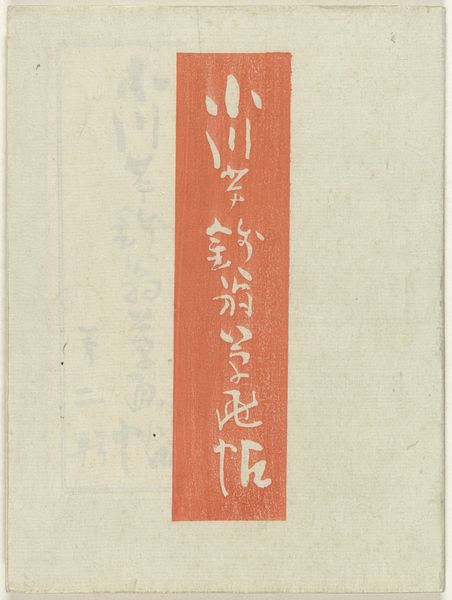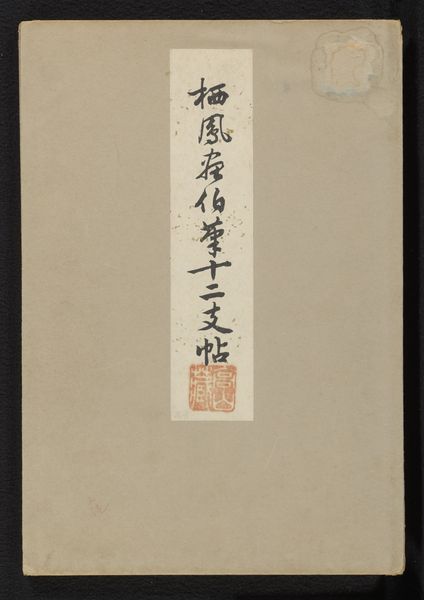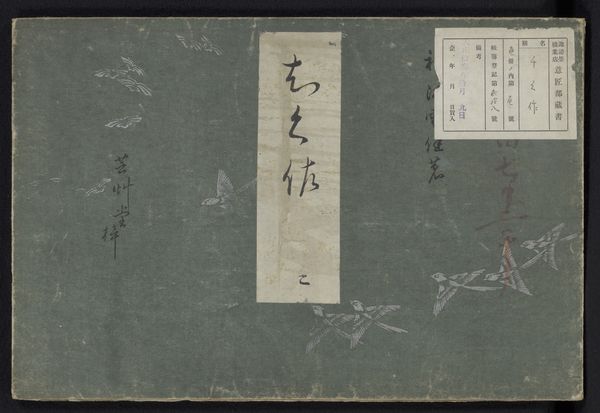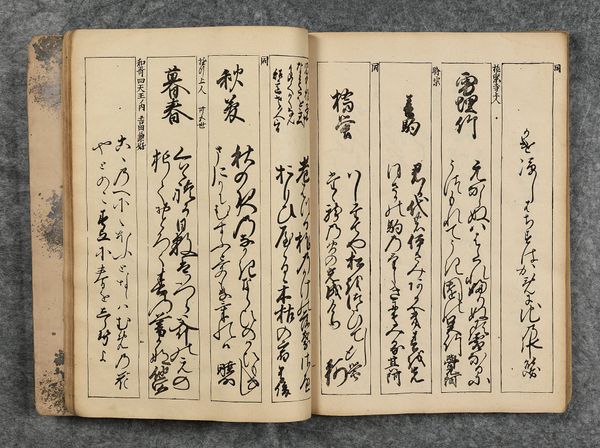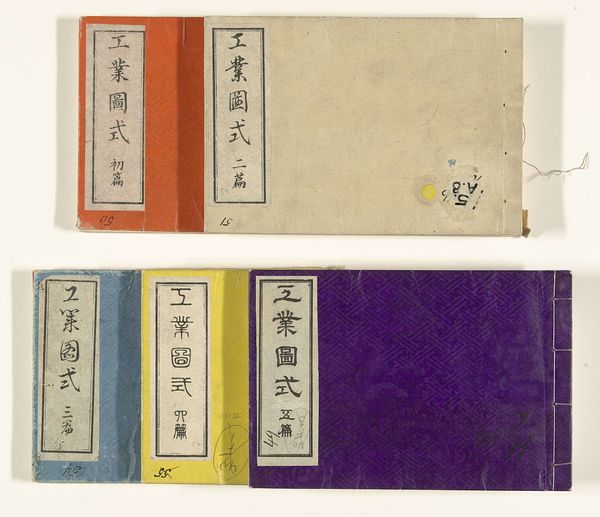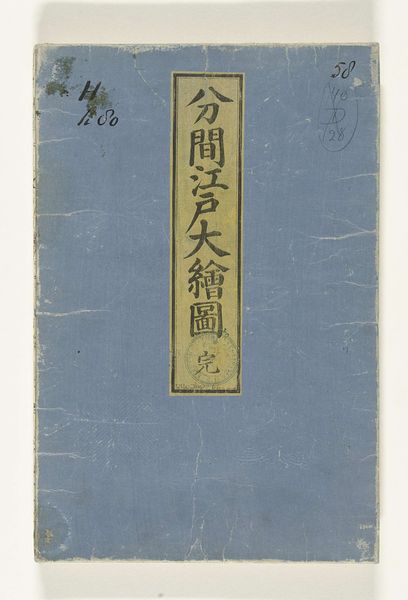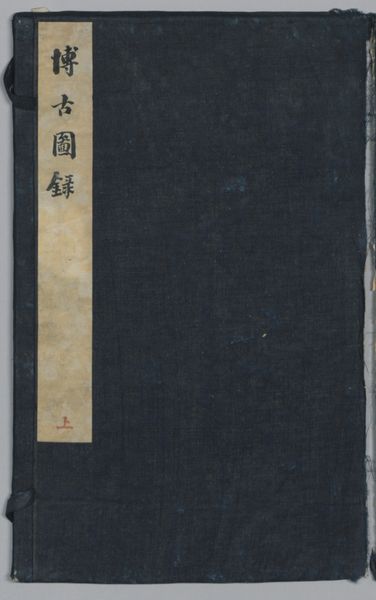
drawing, paper, ink
#
drawing
#
aged paper
#
homemade paper
#
ink paper printed
#
asian-art
#
sketch book
#
hand drawn type
#
paper
#
personal sketchbook
#
ink
#
ink colored
#
sketchbook drawing
#
watercolour bleed
#
sketchbook art
Dimensions: height 23 mm, width 148 mm
Copyright: Rijks Museum: Open Domain
Editor: This is Kobayashi Shokichi's "Getekende voettocht" from 1910-1913, housed here at the Rijksmuseum. It’s ink on paper, part of a sketchbook I think. What's really striking is the… craft of it, I suppose. The aged paper itself seems so important. What do you see in this piece? Curator: It’s interesting that you focus on the paper, its material presence. I see this sketchbook as a window into the labor of artistic creation. Notice the apparent use of handmade paper, the hand-drawn type. The means of production, from preparing the surface to applying the ink, are brought to the forefront. Do you think this challenges traditional notions of 'high art'? Editor: In a sketchbook? Definitely. High art is often about hiding the effort, the messy process, right? Whereas here, the "homemade" aspect feels intentional, even celebrated. It kind of democratizes art-making, makes it feel accessible. Curator: Precisely. Consider also the social context of early 20th century Japan. There was a rising interest in individual expression and a questioning of established artistic hierarchies. A personal sketchbook like this allows for a direct connection with the artist’s thought process. How do the materials used reflect broader cultural values of the time? Editor: That’s fascinating. I hadn’t considered that. I was just thinking about it as a private, personal object. But thinking about the availability and cost of materials back then, the choice of these specific papers and inks would definitely reflect certain cultural or economic realities. Curator: And that's precisely the point. The value isn't just in the image represented but also in the very act of its making, the materials employed, and how they interact with the society from which they originate. Editor: Okay, I think I get it. Seeing it less as just art, and more as a record of process and materials intertwined with its time. Thanks! Curator: Indeed. Considering the labor, the materiality and its relation to society reframes how we engage with it, doesn't it?
Comments
No comments
Be the first to comment and join the conversation on the ultimate creative platform.
